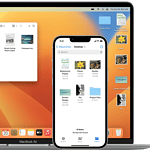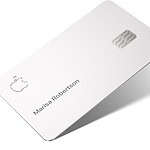Apple’s iPhone lineup has evolved significantly since 2007, not only in performance and features but also in size. The original iPhone had a compact 3.5-inch display, while today’s Pro Max models are nearly 7 inches. Size plays a crucial role in usability, portability, and personal preference when shopping for a new iPhone.
Apple has consistently expanded its iPhone lineup to offer a variety of sizes to suit different needs. From the compact iPhone SE to the larger iPhone Pro Max models, there is an option for everyone. Display sizes range from the handy 4.7 inches of the SE to the expansive 6.7 inches of the Pro Max, catering to those who prioritize portability as well as those who prefer a larger screen for multimedia use.
Each iPhone model varies not just in size but also in features and technical specifications. Apple ensures that even the smaller devices offer impressive performance, often equipped with the same advanced processors found in their larger counterparts. Consumers can expect a high-quality experience across all models, with main differences in battery life, camera technology, and screen resolution based on size.
This guide compares iPhones across generations with a focus on dimensions, screen sizes, and usability.
🔹 Smallest iPhones
iPhone SE (1st Gen, 2nd Gen, 3rd Gen)
- Screen size: 4.0″ (1st Gen), 4.7″ (2nd & 3rd Gen)
- Dimensions:
- SE (2016): 123.8 × 58.6 × 7.6 mm
- SE (2020/2022): 138.4 × 67.3 × 7.3 mm
- Why choose it?
Perfect for users who want a compact, one-handed phone with modern performance.
🔹 Mid-Sized iPhones (Most Popular Range)
iPhone 12 / 13 / 14 / 15 / 16 (Standard Models)
- Screen size: 6.1″
- Dimensions (example – iPhone 16): ~147.6 × 71.6 × 7.8 mm
- Why choose it?
The sweet spot between portability and screen real estate. Fits comfortably in most hands and pockets.
iPhone Mini Series (12 Mini & 13 Mini)
- Screen size: 5.4″
- Dimensions: ~131.5 × 64.2 × 7.4 mm
- Why choose it?
For those who loved the smaller iPhone feel but still wanted modern tech. (Apple discontinued the Mini line after the 13.)
🔹 Largest iPhones (Pro Max Line)
iPhone 12 Pro Max → iPhone 16 Pro Max
- Screen size: 6.7″ (12–15 Pro Max), 6.9″ (16 Pro Max)
- Dimensions (iPhone 16 Pro Max): ~163 × 77.6 × 8.3 mm
- Why choose it?
Ideal for content creators, gamers, and media lovers who want the biggest display and longest battery life.
📊 Quick Comparison by Screen Size
| Model Range | Smallest Screen | Mid-Size | Largest Screen |
|---|---|---|---|
| Classic iPhones (3G → 5S) | 3.5″–4.0″ | — | — |
| iPhone 6 → 8 | 4.7″ | 5.5″ (Plus models) | — |
| iPhone X → 11 | 5.8″ | 6.1″ | 6.5″ (Max) |
| iPhone 12 → 13 | 5.4″ (Mini) | 6.1″ | 6.7″ (Pro Max) |
| iPhone 14 → 15 | — | 6.1″ | 6.7″ |
| iPhone 16 Series (2024) | — | 6.3″ (16 Pro) / 6.1″ (16) | 6.9″ (16 Pro Max) |
(source: Practically Networked, SimplyMac)
✅ How to Choose the Right Size
- For one-handed use & portability: iPhone SE or Mini.
- For balance of size & usability: Standard 6.1″ iPhones (12–16).
- For power users & media lovers: Pro Max models (6.7″–6.9″).
👉 In short:
- SE/Mini = Pocket-friendly.
- Standard = Best balance.
- Pro Max = Big screen, big battery.
Key Takeaways
- Different iPhone sizes cater to a range of user preferences from portability to larger displays.
- Despite size variations, iPhones maintain consistent quality and powerful features across models.
- Choosing the right iPhone involves balancing size with desired technical specifications and features.
Comparing iPhone Sizes and Displays
When choosing an iPhone, size and display quality are vital. Apple has introduced many models with varying screen sizes and display technologies.
Size Evolution Across iPhone Models
The size of iPhones has increased since the original. The iPhone 6S had a screen size of 4.7 inches, and the 6S Plus was 5.5 inches. By contrast, the iPhone 15 series features larger screens, with the standard iPhone 15 having a 6.1-inch display, and the iPhone 15 Pro Max boasting a 6.7-inch screen. Consumers often choose based on comfort, as larger screens provide a better experience but demand a larger hand grip.
Screen Technology and Quality
Apple’s iPhone displays have advanced from the early LCD screens to the Super Retina XDR displays with OLED technology. They provide better contrast ratios and deeper blacks. For example, the iPhone 12 line introduced OLED across all models—not just the Pro variants. The iPhone 15 line improves these with enhanced brightness and color accuracy. Screen resolution has also climbed, offering sharper and more vivid graphics.
Physical Size and Handling
The physical dimensions of an iPhone can affect its usability. An iPhone SE may fit easily in one hand and pocket while a Pro Max model might require both hands. The iPhone 14 Pro Max, for instance, is substantially larger in size compared to the compact SE model. Weight considerations also play a part. iPhones have gained weight with added features like larger batteries and advanced cameras. Users must balance the convenience of a larger screen with the ease of handling smaller models.
Features and Specifications by Size
Choosing an iPhone involves looking at how different sizes affect features like camera quality, battery life, and design options.
Camera Capabilities and Differences
Larger iPhones generally boast advanced camera systems. For instance, the iPhone 15 Pro Max features a 48MP main camera providing sharper details. It also includes an ultra-wide camera and a telephoto lens with optical zoom. The front camera supports portrait mode and FaceTime in high resolution. Smaller models may lack some of these advanced features, offering fewer zoom capabilities and lower megapixel counts.
Performance and Hardware
Across all sizes, iPhones pack powerful hardware. The iPhone 15 Pro Max and iPhone 15 Pro come with the A16 Bionic chip, ensuring fast performance. The iPhone SE, smaller in size, houses the A15 Bionic chip which still delivers fast 5G and Gigabit LTE connectivity. Battery life tends to be longer in larger models due to the physical space for bigger batteries. Storage options are consistent across sizes, typically starting at 128GB.
Color and Design Options
All iPhone models offer a range of colors, including red, blue, pink, midnight, starlight, and green. Size affects the design with the larger iPhones featuring more screen real estate and higher resolutions. For example, the iPhone 15 Pro Max has a 6.7-inch OLED display, while the iPhone 15 Plus provides a slightly smaller screen. Each model offers unique color choices and finishes, reflecting individual style preferences.







